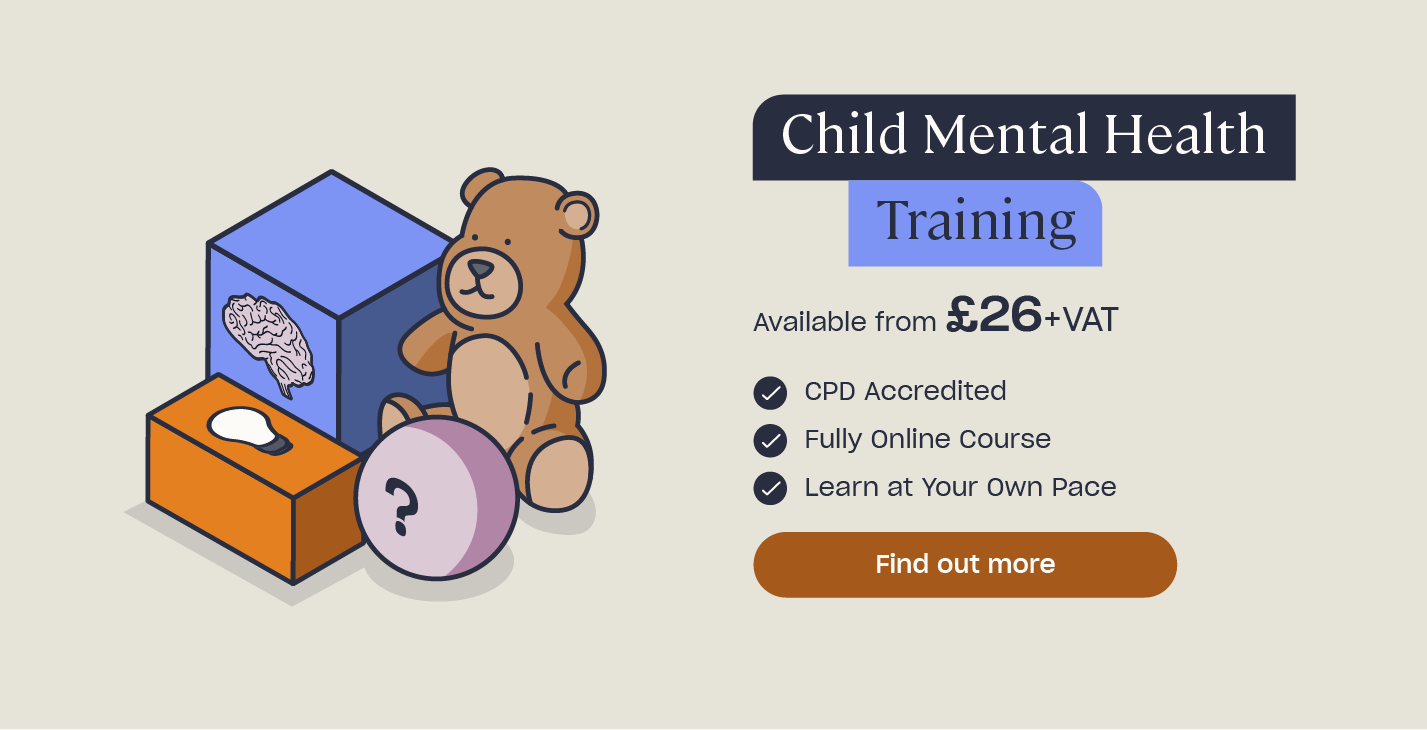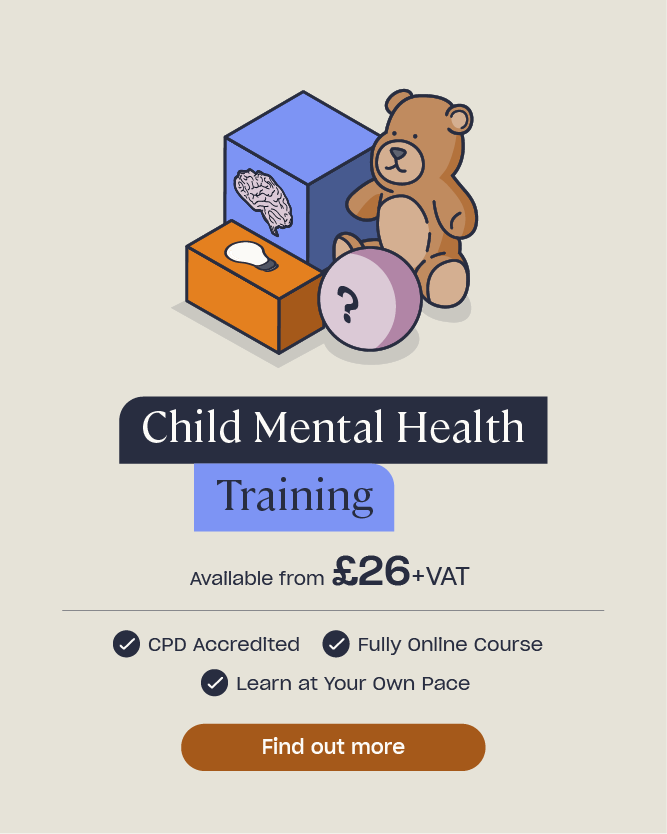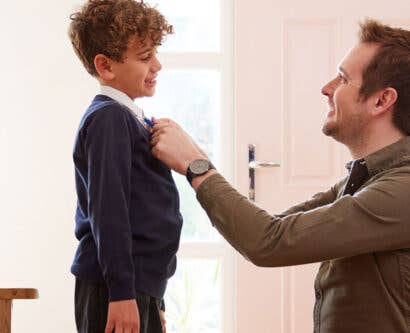Understanding Self-Harm in Childhood
If a young person in your life is self-harming, it can be extremely distressing and confusing. Unfortunately it appears that self-harm in children may be on the rise, with self-harm hospital admissions rising by 22% for children aged 8 to 17 in 2023, whilst this figure is actually dropping in other age groups.
As a result, it’s more important than ever that we thoroughly educate ourselves on mental health so that we can better understand why mental illnesses occur and how we can support someone, particularly a child, who is suffering with poor mental health and/or self-harm.
In this article, we will explain what self-harm is and how it is characterised, explore a few reasons why a child may begin to self-harm, underline ways in which you can spot signs of self-harm in a child, and suggest tactics with which you may be able to support a child who is suffering.
Self-Harm in Children and Young Adults
Self-harm, also sometimes known as self-injury, self-mutilation, or self-abuse, is the act of an individual deliberately damaging or hurting themselves/their body without the intention of suicide.
There are many different ways to self-injury, but any way that someone intentionally hurts themselves, physically or emotionally, can be categorised as self-harm. Because of this, it is possible for someone, particularly children, to be self-harming without realising that that’s what they’re doing and without understanding the magnitude of their actions. Furthermore, self-harm is usually inflicted in secret due to fear of interference or judgement from other people.

Some of the most common forms of self-harm include:
- Cutting yourself, commonly on the arms, legs or stomach.
- Burning.
- Scratching of the skin, usually to the point of drawing blood.
- Biting.
- Hair pulling.
- Head-banging.
- Drinking harmful substances, such as bleach or detergent.
- Deliberately putting yourself in dangerous situations.
- Punching yourself.
- Sticking things into the body.
- Scalding yourself with hot water.
The most common form of self-harm is cutting. Children will usually either inflict deep lacerations or form a series of smaller, shallower cuts in one area. This form of self-harm often causes visible scars or wounds, however these can be easily hid via clothing or jewellery, for example.
Want to test your current knowledge of child mental health? Take our Child Mental Health Quiz to help identify areas where you may benefit from more insight.
Why Do Children and Teens Self-Harm?
Young people self-harm for many different reasons, and the motive or rationale may not even be clear to the individual who is inflicting the self-harm. One uniting factor, however, is that people who self-harm are usually experiencing overwhelming levels of emotional pain, loneliness, or worthlessness. Self-harm can provide a short-lived sense of release from these difficult emotions.

Below are a few common reasons for a child to inflict self-injury, although it’s important to be aware that these motives can encompass many smaller and more intricate components that lead to self-harm.
To Cope With Difficult Feelings and Situations
Often, self-injury is used as a way to deal with something difficult that is happening or has happened in the past in the individual’s life. It can be a coping strategy for:
- Living with health problems, such as a disability or illness.
- Stressful or upsetting experiences, such as abuse, bereavement, a parent’s divorce or separation, relationship problems, or bullying.
- Attempting to relieve feelings of anger or aggression.
- Changing emotional pain into physical pain.
If you think past or current abuse may be behind a child’s tendency to self-harm, you can learn more about this subject and get further advice on how to help in our articles on Signs of Abuse in Children and Understanding Why Children May Stay Quiet About Abuse.
To Punish Oneself
Another common reason for children to self-harm is due to a sense of self-loathing or to punish themselves for feelings or behaviour that they think needs retribution. This negative self image could be as a result of:
- Aspects of their identity that they’ve been led to believe are wrong or inferior, such as their race and ethnicity, religion or sexuality. Thus, self-harm can be directly linked to experiencing racism, homophobia or other forms of prejudice.
- Body-image concerns.
- Abuse or bullying, leading them to believe they’re not worthy of love or respect.
- Absent or preoccupied caregivers.
Recent research suggests that 27% of young people with experience of bullying had self-harmed as a result. To get advice on how to support a child through bullying before it gets to this point, read our articles on Why is Cyberbullying Harmful and What Actions Can You Take and How to Deal With Bullying at School.
To Communicate Pain
Self-harm can be a way of expressing pain for children who don’t know how to verbalise it. Because of this, it’s often mistaken as attention-seeking behaviour, however this is a false myth, particularly as most people try to hide or disguise their self-harm from loved ones.
For a child, it can be difficult to understand or describe difficult emotions they’re experiencing. Sometimes, they will turn to self-harm as an alternative way to communicate how they’re feeling.
To Gain a Sense of Control
Self-harm can often begin as a result of a child feeling a lack of control over their own life, their body, or their environment. Self-harm can be used as a way for a young person to counter this and take agency over their body, as the damage they’re inflicting on themself is something they feel control over.
Self Harm and Mental Illness
Self-harming is not classed as a mental illness in itself, but is often linked with mental health disorders as some mental illnesses increase people’s susceptibility to self-harm. In fact, in one study 90% of participants who frequently self-harmed were found to have had history with a mental or behavioural disorder.
Often, the symptoms of a mental health disorder include an over-intensity of emotion that is uncontrollable. This can be so unbearable for a sufferer that it feels intolerable, pushing them to seek some temporary release via self-harm. This is a vicious cycle, however, as self-injury often worsens a person’s mental condition by feeding into their insecurities, worries, pain, and fears.
Some mental health disorders that can be commonly linked with self-harm, include:
- Bipolar Disorder.
- Borderline Personality Disorder.
- Depression.
- Anxiety.
- Substance Use.
Some children might try self-harm once, but not continue it as a coping strategy, whereas others may try it several times and then become reliant on it as they believe it makes them feel better, even if the relief is just momentary.
Signs of Self Harm
As self-harm is usually a secretive act, it can be difficult to identify when a child is participating in this behaviour. Often self-harm will be accompanied by some form of physical or emotional change in a child, however, so there are certain signs to look out for which may indicate a young person is injuring themselves.
The physical signs of self-harm can include any evidence of unexplained bodily injury, but most often cuts, bruises, burns, bite marks, or bald patches on their body. Some of the most common areas of the body that children choose to self-harm and where you may see physical evidence of this, are:
- Arms.
- Wrists.
- Thighs.
- Chest or stomach.
- Head.
Whilst these physical signs may not always be visible or can be well hidden, they will usually be accompanied by some kind of emotional change in the child. It’s important to note that these emotional signs can also be indicative of a range of other issues, but if you suspect a child may be self-harming then look out for the following behaviours:
- Always keeping themselves covered, for example wearing long sleeves or trousers even when it’s hot and refusing to participate in activities such as swimming which require more bodily visibility.
- Finding bloodstained items or garments in amongst their belongings, for example clothing or tissues.
- Becoming withdrawn from friends or family and isolating themself more than usual.
- Feeling depressed, angry, guilty, or anxious more than usual. These emotions may display themselves in intense and unprovoked outbursts.
- Engaging in increasingly risky behaviour or putting themselves into dangerous situations.
- Having low self-esteem, thinking they’re not good enough, or blaming themself for things that are beyond their control.
Signs of Self Harm for Teachers
Whilst any of the signs listed above can also be observed by school staff, there are also further signs that are more applicable to a school environment which you should be aware of and look out for in pupils you suspect may be self-harming.
- Asking excessively to use items from the school/classroom first aid kit, such as plasters or bandages. This may indicate they’re wounding themself and don’t want to use medical equipment from home in case their parents notice and question it.
- Using school stationary with sharp edges, such as a protractor or paper clip, to scratch at themselves. You may notice that such items are going missing from the classroom.
- Asking questions about self-harm, trying to find information about it from the school library, or using school computers to make self-harm related searches.
- Isolating themself from their school friends more than usual or refusing to participate in group activities/learning exercises.
- An unexplained drop in grades and quality of work, or not turning in homework assignments.
- Refusing to get changed for Physical Education class, as this would require exposing areas of their body that may be scarred or wounded.
Teachers are well placed to monitor their students and, as they spend so much time with them, are likely to notice subtle changes in behaviour. Once you’ve identified any of the above warning signs in a pupil, you’re in a good position to intervene and offer support.
Want to Learn More?
Our Child Mental Health Training offers thorough insight into a number of common emotional, behavioural and hyperkinesis disorders to help you be confident and as prepared as possible to identify and support a child who may be struggling.
How to Help a Child Who Self Harms
Whilst caring for a child who is self-harming is an incredibly difficult experience and can feel helpless at times, it’s important that you don’t shy away from the situation or hope it will resolve itself with time. There are a number of things you can do to support a child experiencing self-harming tendencies, which will help aid their healing process.
Offer Emotional Support
It can be difficult to accept that your child, or a child you care for, is deliberately hurting themselves. It’s natural that you may feel upset or anxious by this, or even blame yourself for the situation. It’s vital that you don’t let your own feelings cloud your support, however. At this time, you need to be more open and caring than ever. To show that you’re there for the child, you could try:
- Letting them know you’re willing to listen whenever and however they choose to discuss their troubles, whether this is through a direct conversation, or perhaps written in some format such as a message.
- Be open to whatever they’re willing to tell you without asking too many questions. Pushing a child to reveal why they have chosen to self-harm may make them feel judged or cause them to retreat further.
- Ensure that they are aware of how much you love and care for them, and that you want to help them.
- Letting them know that experiencing difficult and turbulent emotions is natural and that it’s okay for them to be honest with you about what they’re going through.
Focus On The Underlying Cause
Remember, a child doesn’t begin self-harming for no reason. Whilst it can be easy to focus wholly on the action of the self-harm, and try to prevent this, it’s more important to consider the underlying issues that are causing the self-harm.
Hiding or removing items that a child is using to self-harm will not fix the issue, and can lead to them finding other ways to injure themself which could be more severe. Instead, you need to support the child to heal emotionally and mentally in order to really fix the issue. Once you know what’s causing them so much pain, you can consider ways to help them feel better.
It may be wise to get professional guidance from a GP, NSPCC helpline staff, or the Child and Adolescent Mental Health Services (CAMHS) if you’re struggling to know how to best support a child with their emotions.
Encourage Healthy Coping Mechanisms
A child may turn to self-harm as they don’t know of any other way to deal with or materialise their difficult feelings. Guiding them towards some more healthy coping strategies may help them to find another, more safe, way to provide comfort or release rather than self-injury.
Some examples of healthy ways to cope with and release uncomfortable emotions, include:
- Painting, drawing, or scribbling to express how they feel and release pent up emotions.
- Holding an ice cube until it melts.
- Writing down their feelings, then destroying the paper by tearing it up or burning it.
- Listening to music, perhaps loudly.
- Punching or screaming into a pillow.
- Exercising.
- Taking a bath or shower.
- Pushing against a sturdy wall or door frame as hard as they can.
- Counting down from 500.
- Writing a pro and con list for self-harming.
There are many more alternatives for self-harm like those above available on the childline website.

Build Up Self-Confidence
A common factor contributing towards a child self-harming is low self-esteem or confidence. This is something that you and others around the child can really help to counteract with positive affirmations and praise, such as:
- Frequently reminding them about all the things they do well.
- Learning something new together.
- Letting your child know that you’re proud of them and why. This could be communicated verbally or via a written list. Try to focus on things that are innate to them, such as their personality, rather than external achievements such as academics or sport.
- Ensure that you’re being a good role-model by only speaking kindly about yourself and modelling self-love.
Self-harm in children is a complicated and understandably distressing subject, but as with other mental health issues it’s essential to increase our knowledge and understanding of it so that we can best support those who are suffering. Although the reasons for self-harming can be nuanced, it is often related to intense negative emotions that a child is struggling to cope with. There are many ways to support a child who is self-harming and help them to deal with their feelings in a healthier and more long-lasting way.
Further Resources:
- Child Mental Health Quiz
- Signs of Abuse in Children
- Understanding Why Children May Stay Quiet About Abuse
- Why is Cyberbullying Harmful and What Actions Can You Take?
- How to Deal With Bullying at School
- How to Help a Child with Depression











